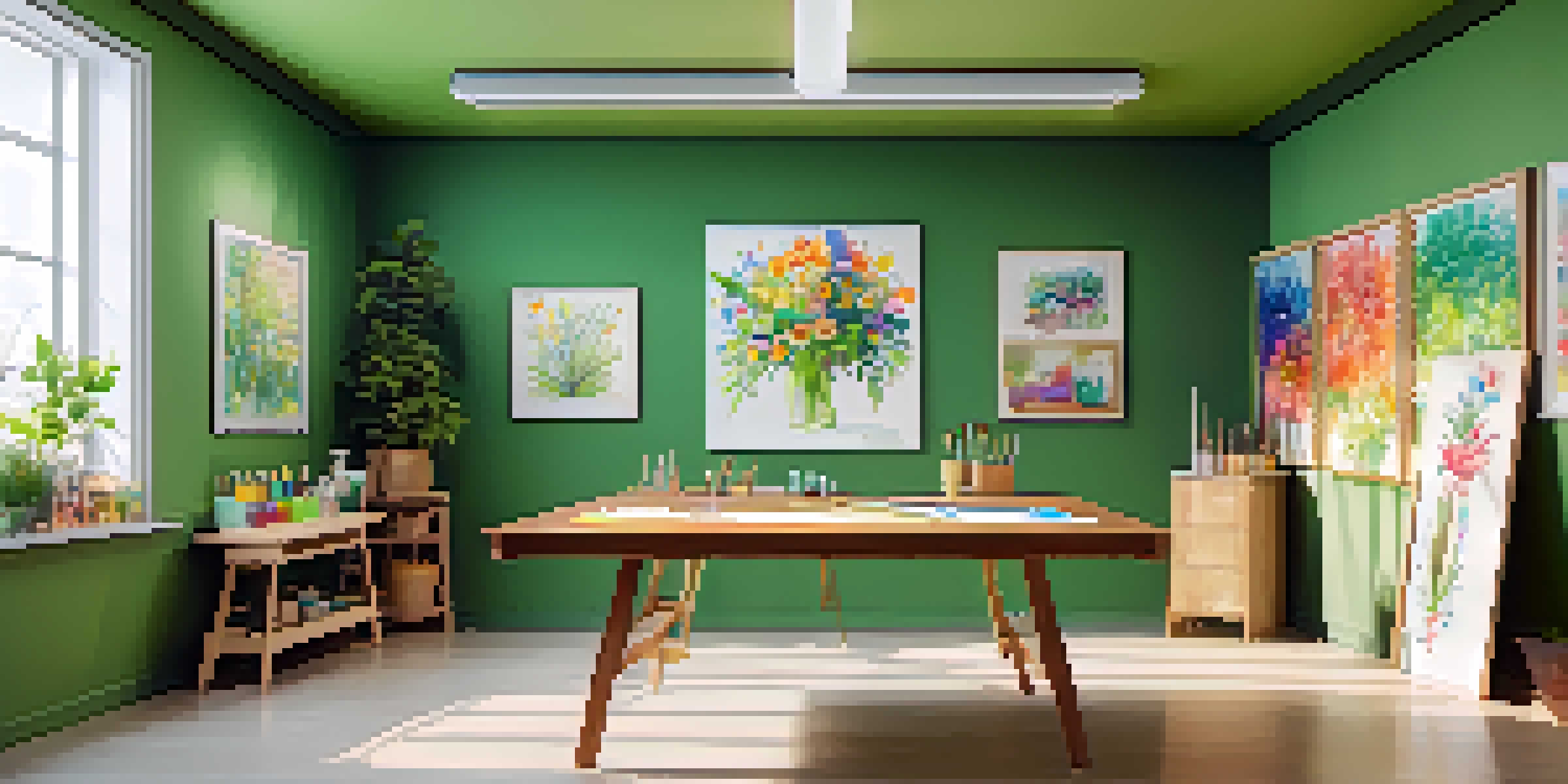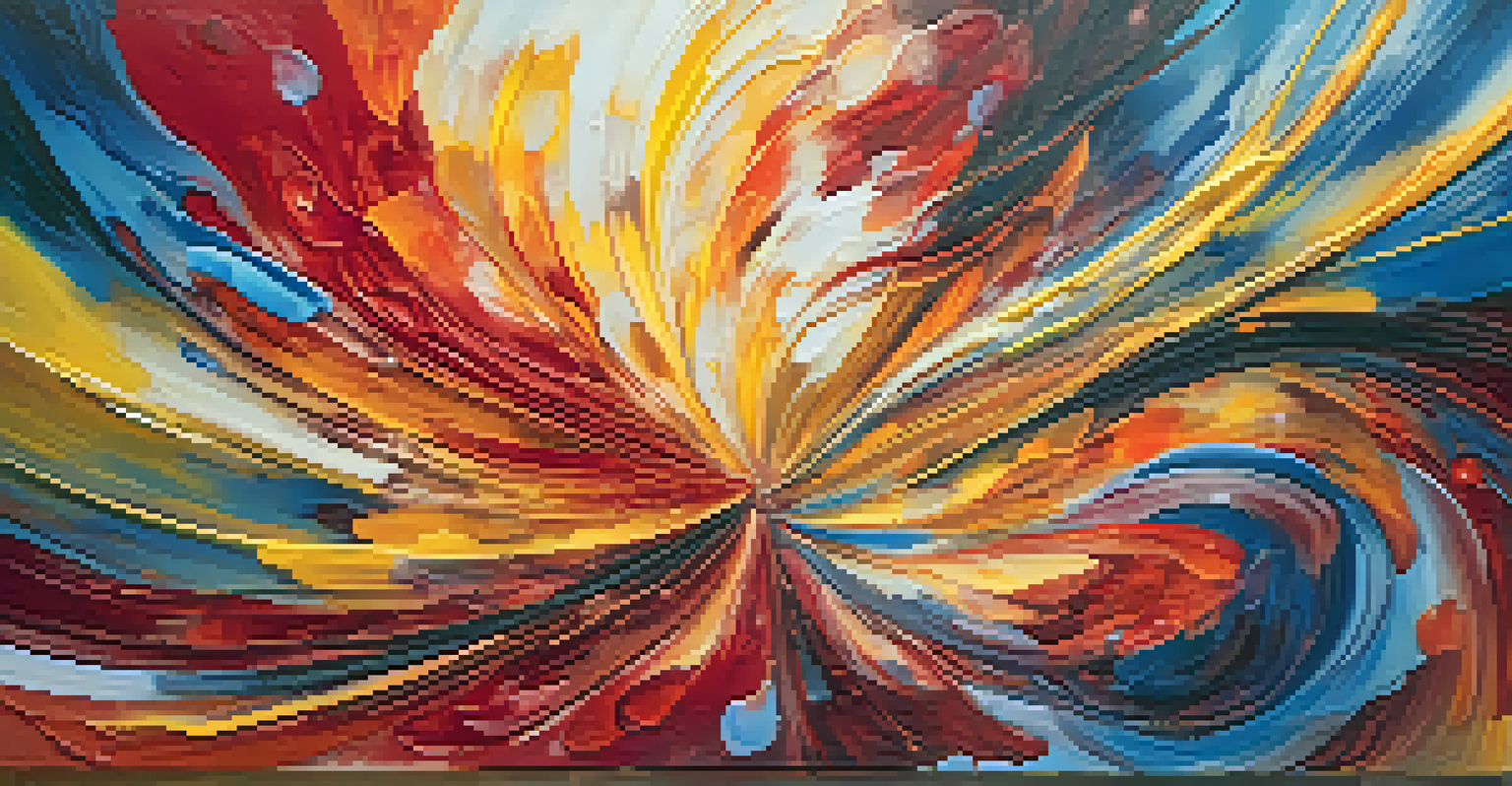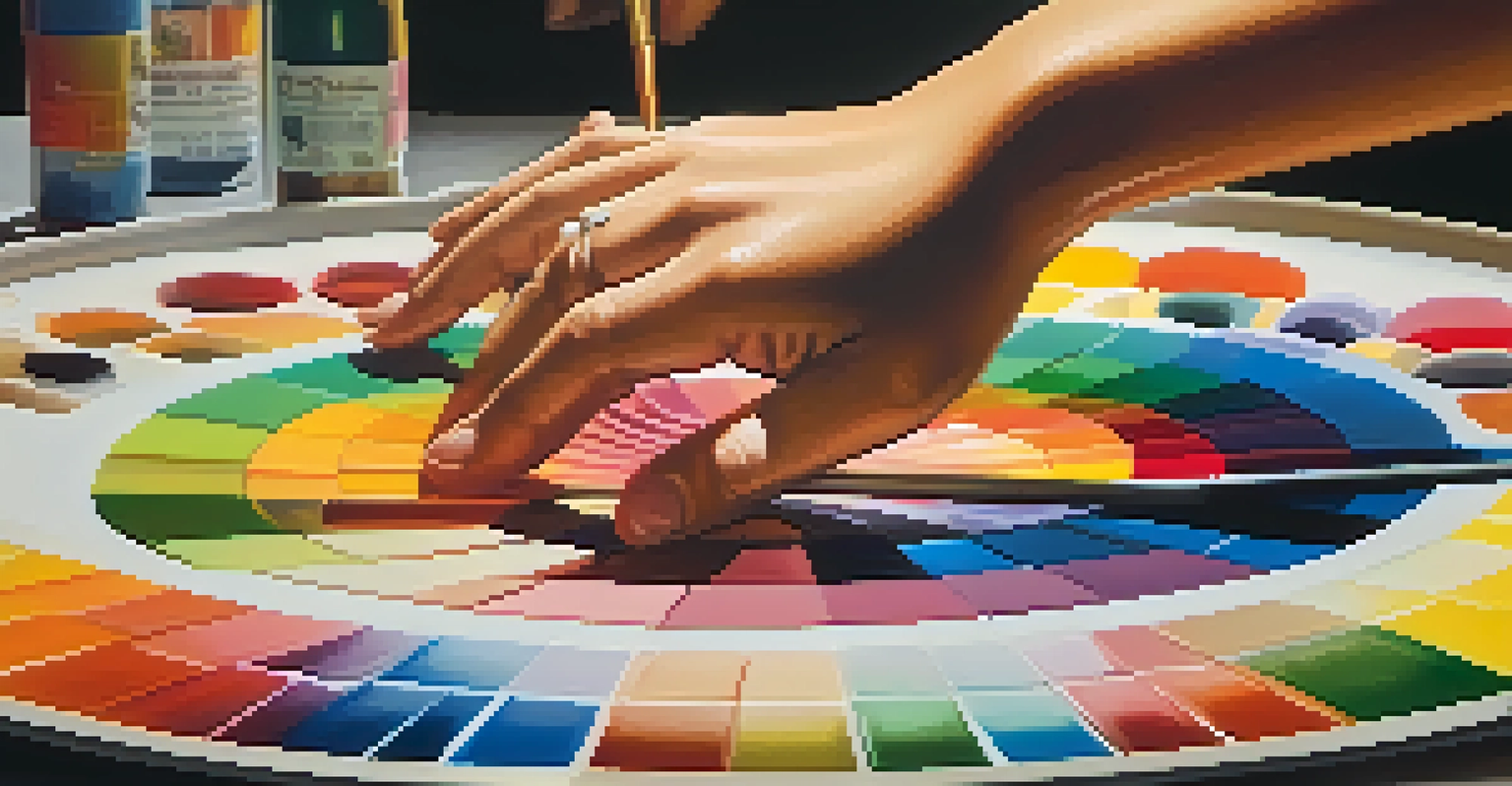Exploring the Therapeutic Effects of Color in Art Therapy

Understanding Art Therapy and Its Benefits
Art therapy is a creative process that promotes mental well-being through artistic expression. It allows individuals to communicate feelings they may struggle to verbalize. By engaging in art, people often experience a sense of relief and empowerment, making it a valuable tool for personal growth.
Art is the most beautiful of all lies.
One of the key benefits of art therapy is its accessibility; no artistic skill is required. Participants can freely explore their emotions and thoughts, leading to insights and healing. This inclusivity helps break down barriers for those who might shy away from traditional therapeutic approaches.
Moreover, art therapy can be particularly effective for individuals dealing with trauma, anxiety, or depression. The safe space created by art-making fosters emotional exploration, allowing clients to confront and process their experiences at their own pace.
The Role of Color in Emotional Expression
Color plays a crucial role in how we express and perceive emotions. Different colors can evoke distinct feelings; for instance, blue often promotes calmness, while red can signify passion or anger. Understanding this connection can enhance the therapeutic process.

In art therapy, clients are encouraged to choose colors that resonate with their emotions. This choice can serve as a powerful form of self-expression, revealing insights about their emotional state. For example, a client who uses dark colors may be grappling with sadness, while vibrant hues could indicate joy or hope.
Art Therapy Enhances Emotional Growth
Art therapy provides a creative outlet for individuals to express and process emotions, facilitating personal healing and empowerment.
By consciously selecting colors, individuals can better understand their feelings and communicate them visually. This process not only aids in emotional release but also facilitates conversations about their experiences and emotions.
Color Psychology: A Brief Overview
Color psychology is the study of how colors influence human behavior and emotions. This branch of psychology suggests that colors can have profound effects on our mood and well-being. For instance, green is often associated with tranquility and nature, promoting relaxation.
Color is the keyboard, the eyes are the harmonies, the soul is the piano with many strings.
In art therapy, practitioners leverage color psychology to guide clients in their creative choices. By understanding the emotional implications of different colors, therapists can create tailored experiences that resonate with individual needs. This approach enhances the therapeutic impact of art-making.
Furthermore, color psychology can help individuals identify and articulate their feelings. For instance, someone who feels overwhelmed may gravitate toward cooler colors like blue or purple, reflecting their need for calm and stability.
Using Color to Process Trauma
Processing trauma can be a daunting task, but color can serve as a helpful tool in this journey. Art therapy sessions often encourage clients to use colors that represent their experiences. This method allows individuals to externalize their trauma in a safe and controlled environment.
For example, a client might choose to paint a traumatic memory in dark shades to signify pain or sadness. As they work through these feelings, they can later add brighter colors to represent healing and hope. This visual representation can be cathartic and enlightening.
Color Influences Emotional Expression
The selection of colors in art therapy can reveal deep emotional states, helping clients articulate feelings they may struggle to express verbally.
Through this process, clients can gain a deeper understanding of their trauma and how it affects their emotions. The act of transforming dark colors into lighter hues symbolizes growth and resilience, making the healing journey more tangible.
Color and Cultural Significance in Art Therapy
Colors can carry different meanings across cultures, influencing how individuals relate to them. For instance, while white may symbolize purity in some cultures, it can represent mourning in others. Understanding these cultural nuances is essential in art therapy.
Therapists often take cultural backgrounds into account when guiding clients in their color choices. By recognizing the significance of certain colors, therapists can help foster a more inclusive and respectful therapeutic environment. This awareness promotes trust and openness in the art-making process.
Moreover, exploring cultural interpretations of color can enrich discussions during therapy sessions. Clients may share personal stories related to specific colors, fostering connection and deeper understanding of their identities and experiences.
The Therapeutic Impact of Color Combinations
Beyond individual colors, the combination of colors can also influence emotional responses. Color harmony or contrast can create different feelings, adding another layer to the therapeutic process. For example, a blend of warm and cool colors can evoke a sense of balance and tranquility.
In art therapy, clients are encouraged to experiment with color combinations to express their emotions more fully. This creative exploration can reveal underlying feelings that may not be immediately apparent. It invites clients to play with their emotional landscape and discover new dimensions of their experiences.
Cultural Context Shapes Color Meaning
Understanding the cultural significance of colors in art therapy fosters a respectful environment, enhancing trust and connection during the therapeutic process.
Additionally, therapists can use these combinations to facilitate discussions about emotional balance. Clients may reflect on how certain color pairings relate to their life experiences, helping them gain insights into their emotional states and relationships.
Practical Tips for Integrating Color in Art Therapy
Integrating color into art therapy sessions can be a transformative experience. One practical tip is to encourage clients to create a color wheel, which can help them identify colors that resonate with their emotions. This simple exercise fosters self-awareness and enhances their understanding of personal feelings.
Another approach is to use color prompts, where clients are asked to choose a color based on how they feel at the moment. This can lead to meaningful discussions about their emotions and experiences, making the art-making process more intentional.

Finally, encouraging clients to reflect on their color choices after completing their artwork can deepen their insight. Discussing why they chose specific colors and what those colors represent can create opportunities for growth and healing in their therapeutic journey.